ICSTCC 2018, Sanaia, Romania
This year in October I participated International Conference on System Theory, Control and Computing (ICSTCC) in CASINO Sinaia, Sinaia, Romania. We had a presentation about Fully Automated Attractor Analysis of Cyanobacteria Models.
ICSTCC is a joint conference of multiple conferences which aims at bringing together scientists from Academia and Industry to discuss the state of the art and the new trends in System Theory, Control and Computer Engineering, and at promoting professional interactions and fellowships. Since I recently started some research in this area, we decided to submit a preliminary paper to this conference (in cooperation with attractor analysis group in our lab). It got accepted and I and my colleague Samuel were sent to present the work at the conference.
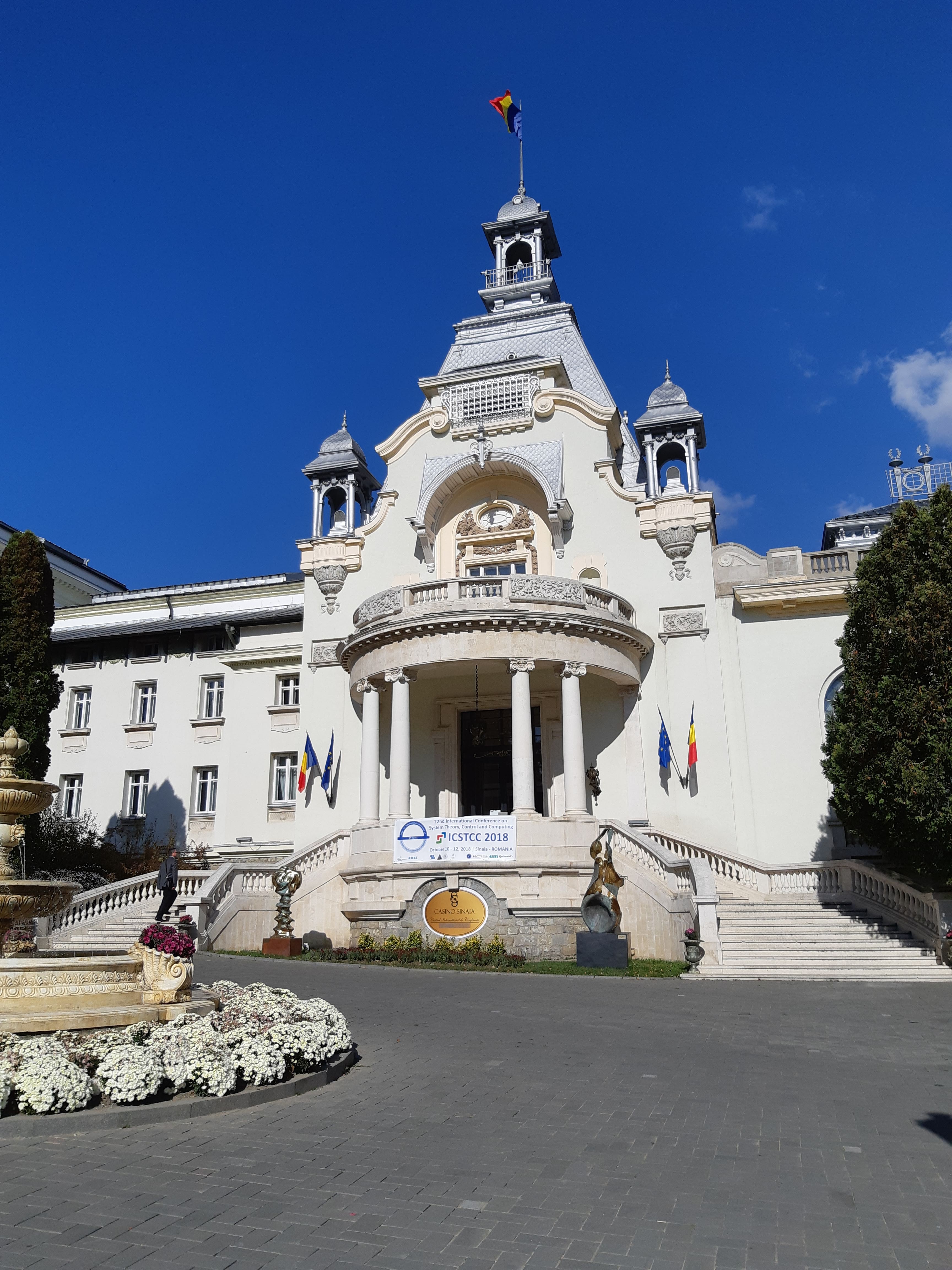
Tuesday (9.10.2018)
Our (me and my colleague Sam) business trip started at Grand hotel station in Brno. We took RegioJet bus to Vienna airport, which took approximately 2 hours. We spent the time by discussing some work. Particularly, we were trying to come up with a new name for the family of tools we are developing in our lab. Since we want something original and catchy, we were trying many options such as the names of prophets, words in Latin, and many abbreviations. It was quite fun. Unfortunately, we still don’t have the name which would be perfect for our purposes, but we got many ideas.
In Vienna, we had about three free hours till our flight. We were hungry, so we decided to go directly to check-in and then find some food. A funny moment was when a random person gave me his phone to answer a phone call. There was someone talking in German, so I said “Ich spreche nicht Deutsch” and returned the phone. My four years of German language courses were useless…
The airport was surprisingly empty. The check-in took us about 5 minutes. Then we ordered burgers in a restaurant. They weren’t special, but not bad after all. After food, we still had 1.5 hours, which we spend mostly by working.
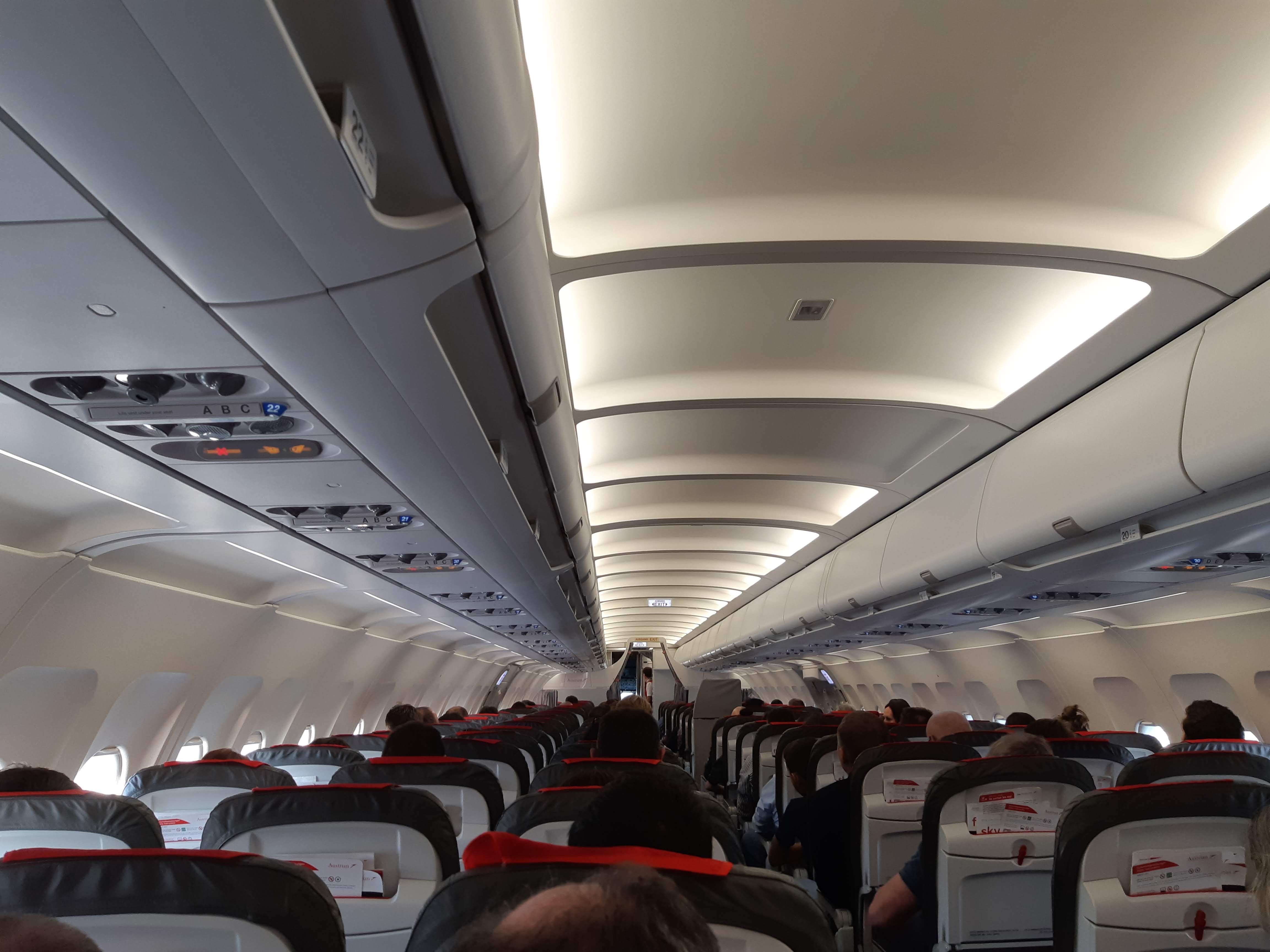
Also, the airplane was pretty empty. I would say only 2/3 of the seats were taken, which is in my opinion quite unusual. Therefore the boarding was very fast. The flight itself was fine, nothing special happened. After 1.5 hours, we landed in Romania.
The first impression was entirely different compared to my expectations. Everything looked very similar to Czechia or Slovakia. We took an express bus to Bucharest, which was approximately for 4 lei. The bus trip to the city took 45 minutes. The bus was new and nice, but quite crowded. In the city, we bought train tickets to Sinaia for 18 lei. Since it was already evening (slightly after 7 pm), the trains weren’t very frequent. We had to wait for an hour. Then, the journey took another 2 hours to Sinaia. The train cars very pretty new, but the locomotive was very old, which was quite interesting contrast. Also, the toilet in the train was not in the best state of its existence.
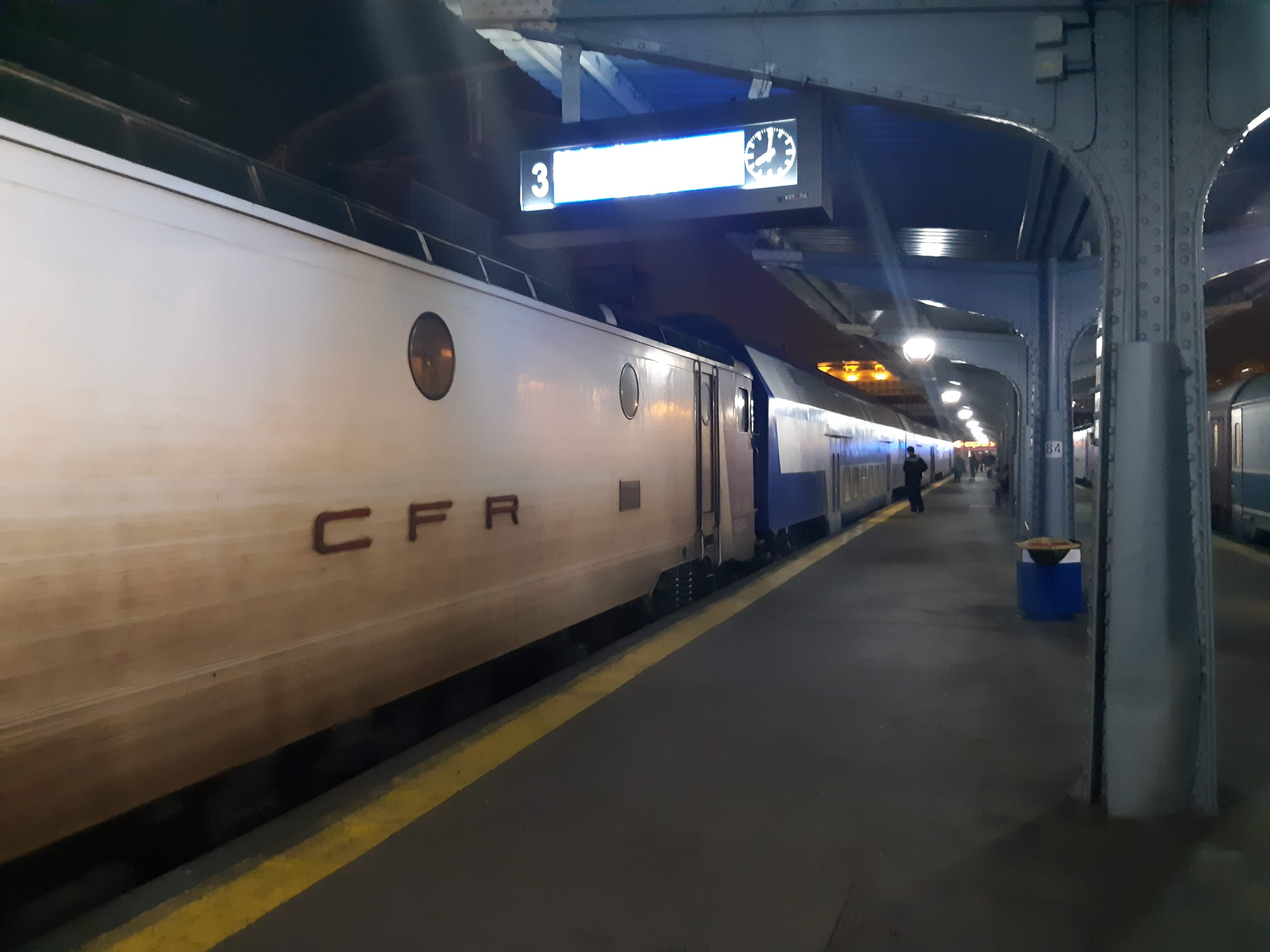
Once we got off the train, we appeared in a small station, which looked like a typical station in a village. Opposite the station was a small up-hill park, above which was our hotel. It was very beautiful there! It was already dark, but we could still see that the autumn looks amazing there. The hotel was also very nice, looked kind of traditionally old, but it was just how it looked like. It was a modern hotel, a standard three-star European hotel. After check-in, we went to our rooms looking forward to finally rest after almost 13 hours of travelling.
The room smelled very strange. It was clean there, but you could feel it is old. Despite the few drawbacks (e.g. the smell, open shower, not very easily accessible plugs), it was great and what was the most important - it was warm in there. The heating was normally working (huraaay!), the windows were old from the outside, but then there was another layer of plastic window. Really good idea how to keep up with modern trends and also preserve the old-looking style.
Wednesday (10.10.2018)
In the morning after breakfast, we went to the conference venue for registration. The conference building, Casino Sanaia, with an elegant and stylish terrace, a beautiful view over the city of Sinaia and the Bucegi mountains landscape, a spectacular interior garden, and a unique architecture is a symbol of a glorious past and of a vivid present.
Registration went smoothly; they were almost able to pronounce my name. We got a backpack with some gifts. I liked the fact that we automatically got invoice and attendance certificate, which is often required by the economic department after a business trip.
The conference started by an opening ceremony in Baccara Room. Adrian Filipescu, the general chair of the conference, gave a short introductory speech followed by sponsor presentation by ASTI Automation.
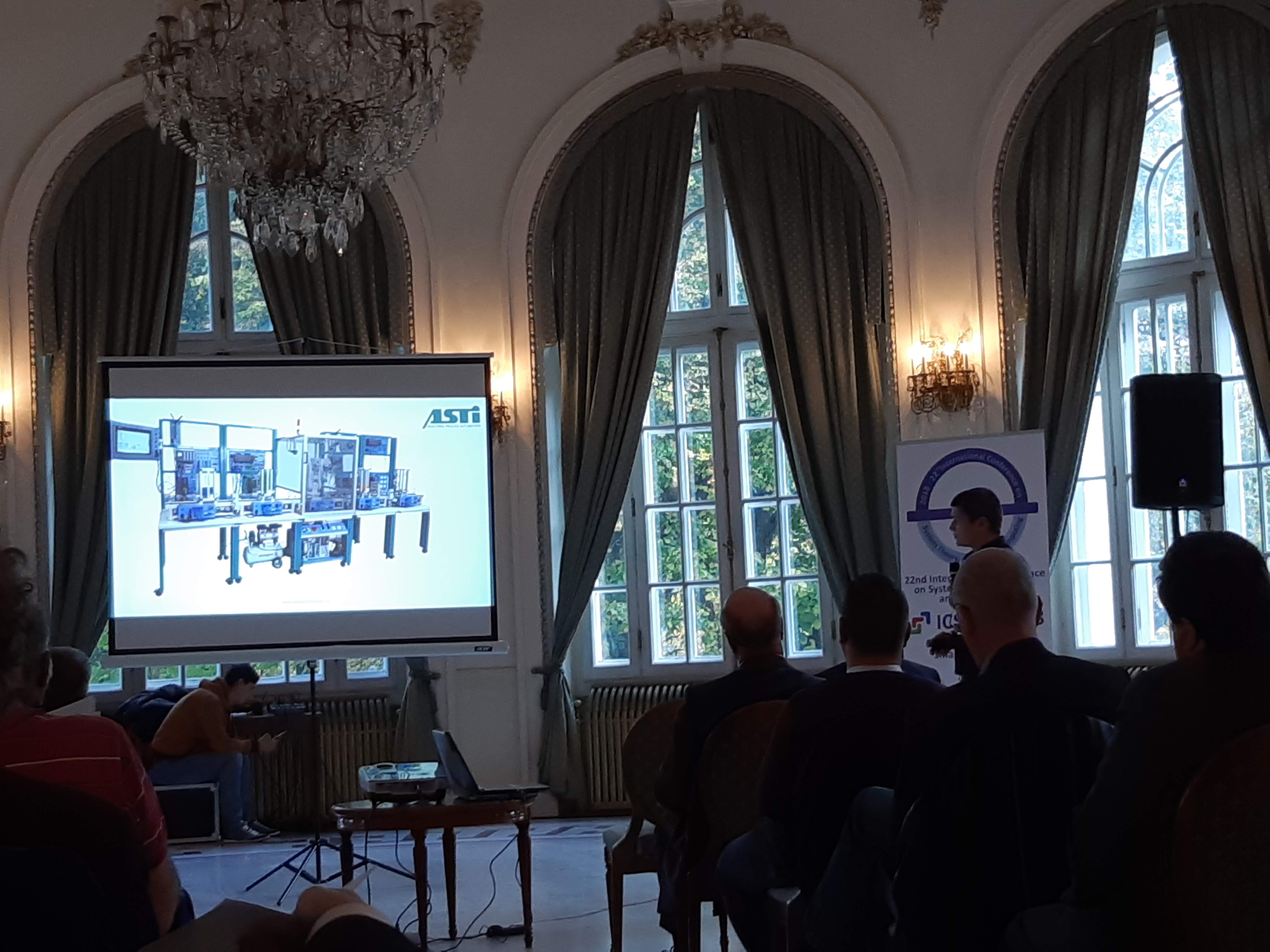
Immediately after that, there was the first plenary talk by Sigurd Skogestad: The BigPicture: Economic Plantwide Control for Complete Processing Plants. The main message was that control as a whole is still not well-established, it is often not clear what are the inputs, what variables to measure etc. He was also talking about combining MPC with PID correction. The problem of what to control was demonstrated on a runner: in case of a sprinter it is quite easy (just maximize the speed), for a marathon it is not clear (speed, distance to the winner, heart rate?…). He was trying to highlight the systematic approach in identification of mentioned issues.
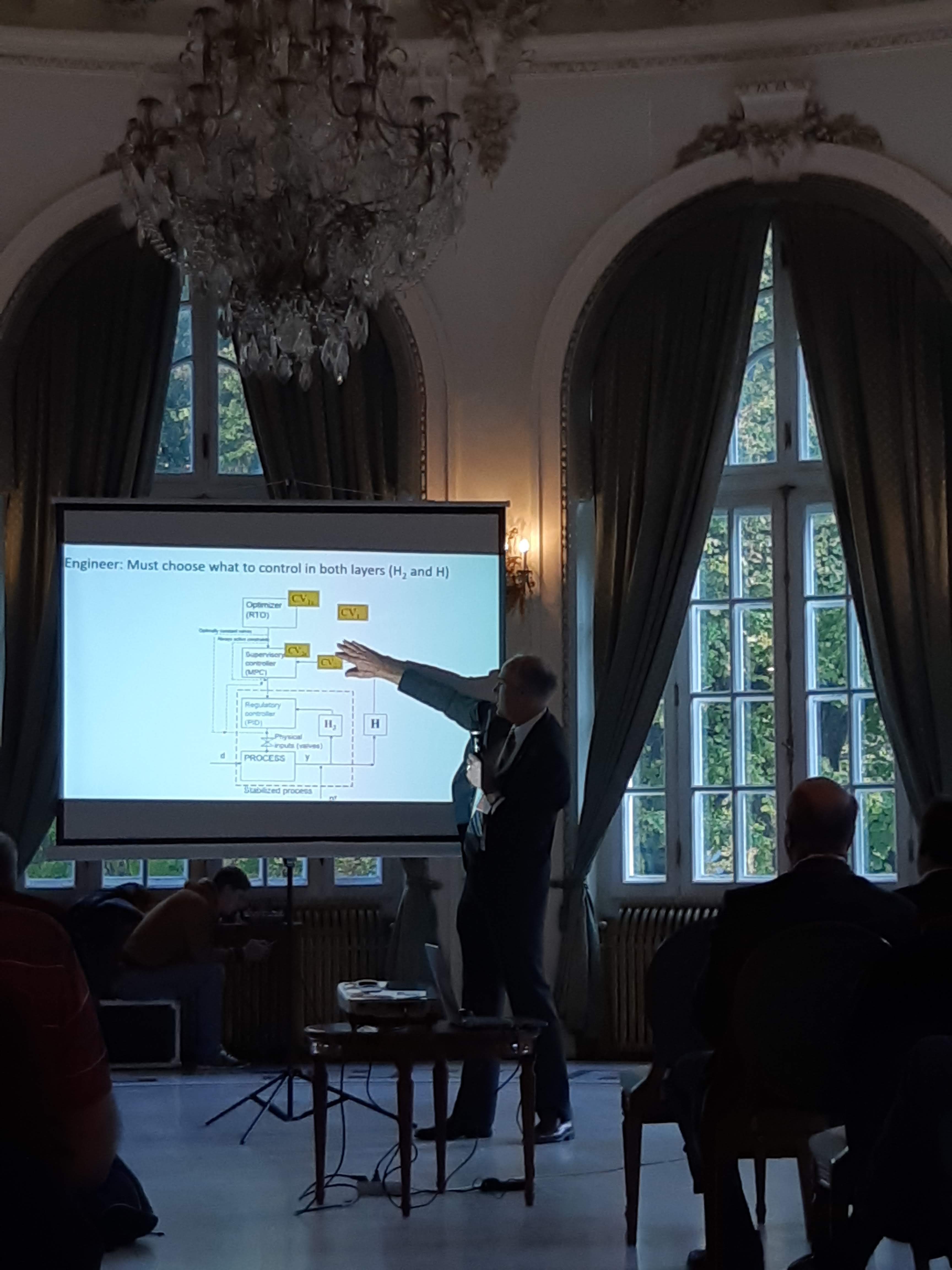
The second plenary talk was given by Dorothée Normand-Cyrot: Nonlinear Digital Lyapunov Based Stabilizing Control. She was describing the issue of nonlinear modelling as an unavoidable approach because of the complexity of systems. At this point, I could see that this conference will be quite hard to follow. The talk contained too much details and mathematics. As an invited talk, I would expect more results and examples than math equations and formalisms. Two examples were given in the end, but they were quite complicated and since it was out of the context it wasn’t very demonstrative.
Then, there were four tracks of regular sessions in parallel. We have chosen Control Applications 1 in King Ferdinand Room. The first talk Efficient Modelling and Control Design for Suppression of Pressure Oscillations in an Industrial Condensation Process was about controlling some dangerous and flammable gases by adjusting pressure, modelling was done using ODEs. They used a genetic algorithm to calculate optimal pressure in open loop system (with no feedback). In the second approach, they used feedback controller (two controllers: PI and PD - some sort of ensemble).
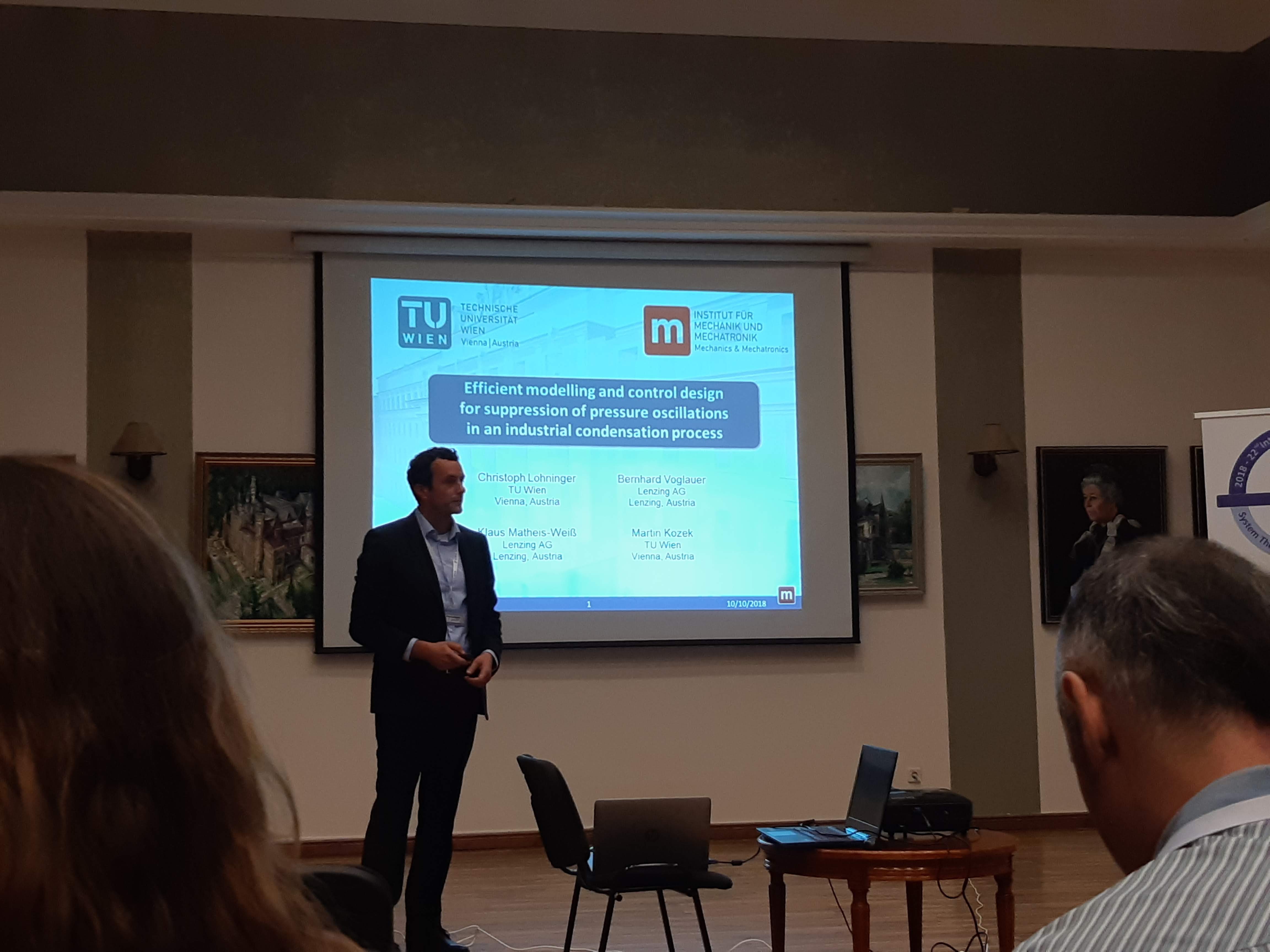
Next talk Simulation of Benzene Column Distillation for Quality Control System Design was a nice demonstration of how modelling and system design are important in the process of control.
The third talk Wind Turbine Emulation Using Permanent Magnet Synchronous Generator was about control of rotation speed of wind speed emulator. They had two goals: optimization (achieve desired speed) and limitation (keep it stable). They used PI controller with identical parameters in both regions.
The talk Intelligent Autonomous Driving was definitely the most exciting one in this session. They were doing control of 1:10 scale vehicle using machine learning. It took into account multiple factors such as video frames (neural network), velocity (PID), and GPS coordinates. The mechanically constructed the vehicle from Raspberry Pi and other parts, implementation was done in Python. In the algorithm there was used a lot of path planning using maps and GPS (predictions). Pretty good and promising results. There was a video demonstration of the car driving itself.
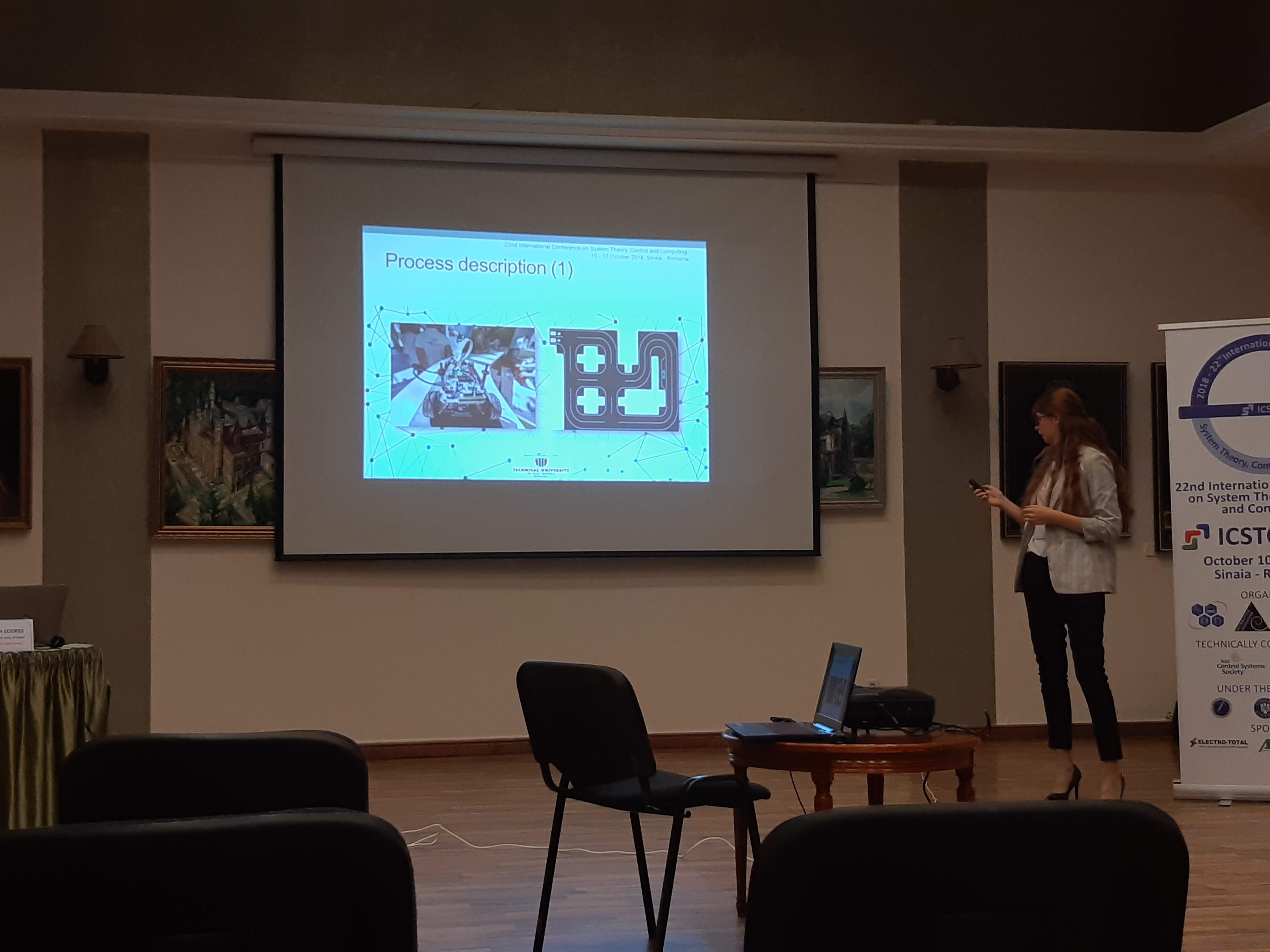
The last talk of the session was Gain Scheduling Controller Design for Wind Systems Using a Data Driven Algorithm again about a wind plant control, given by the same speaker than in the third talk. An interesting fact was that there were no shared co-authors (except the presenter). They used grain scheduling - it is a technique how to change parameters of the controller according to the current input/observable.
After the session, we had a lunch break. We had about 1:30 hours for that and it took place in Palace Hotel, a few meters from the casino. The food was quite delicious. The rest of the time we were resting in the park enjoying a nice autumn winter.
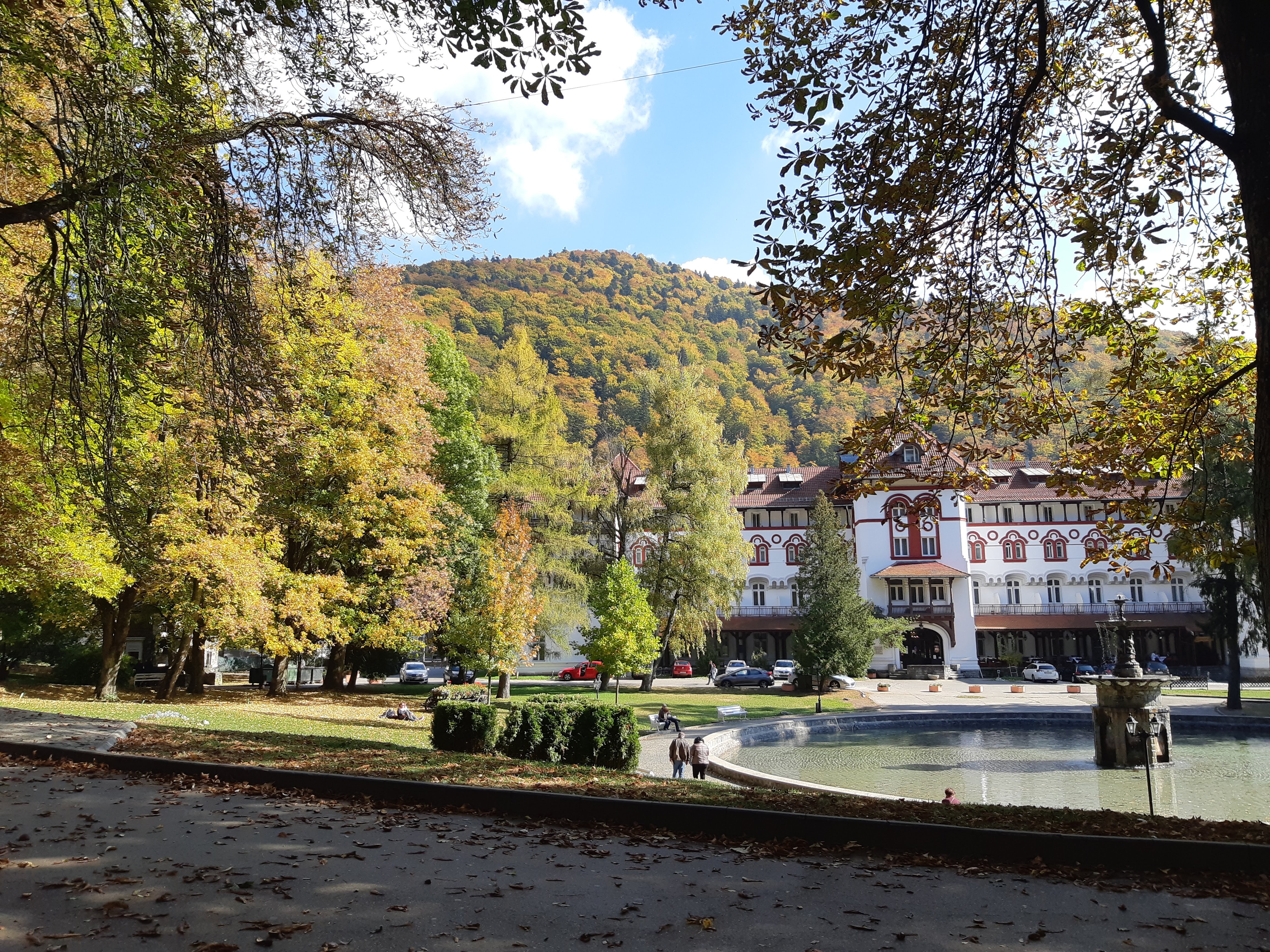
The afternoon program was very similar - two plenary talks followed by a regular session. Third plenary talk was given by Emilia Fridman: Sampled-Data and Networked Control Systems: A Time-Delay Approach. She was describing the problem of lag - surprising effects of delay on stability: it may be both stabilising and destabilising. She was discussing problems of discrete vs. continuous systems and so called time-delay approach - continuous time system with delayed control input. The fourth plenary talk by Ion Necoara: Optimization in Control: Recent Advances and Challenges was generally about model predictive control (MPC).
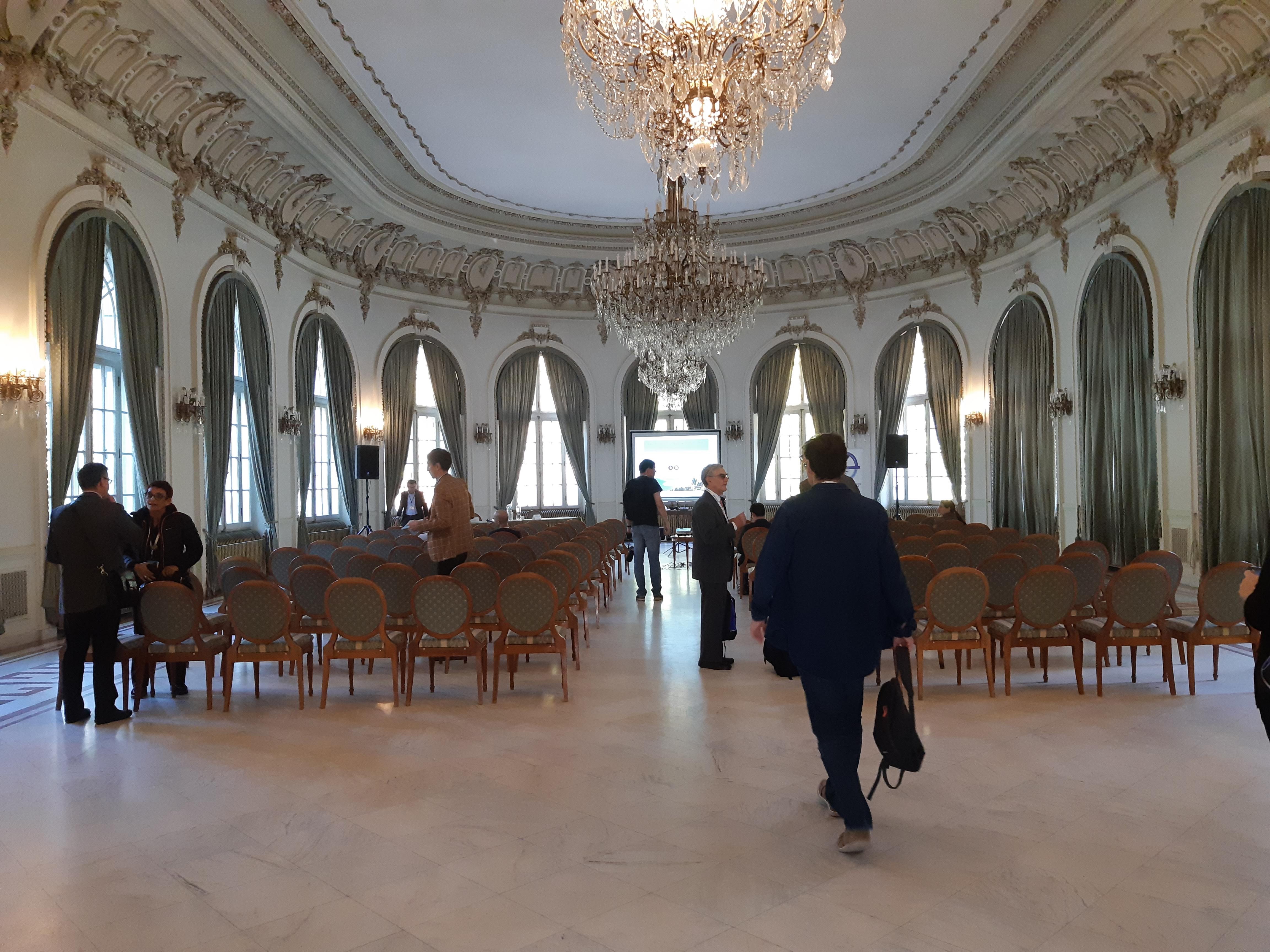
For regular session, we have chosen Modeling and Control of Wastewater Treatment Systems (a.k.a. wasteland) in King Carol I Room, since it was closest to the biologically-relevant topic. The talks can be summarised as follows: there are some biological processes to remove organic matter, sludge, and nitrogen etc. It is usually done by providing enough dissolved oxygen to perform the processes. The authors presented different approaches how to improve and control such processes. For example, a proposed approach was to build a special anaerobic digester where it is possible to control temperature, those gases and other inputs. They also considered the economic perspective. Another approach was using modelling and iterative learning control with PD controller. Finally, other authors considered an aspect of energy saving - for example, in sensor networks one does not want to receive signals constantly. They established some event-based control strategies - the controller is not sending the control all the time, only in some special events.
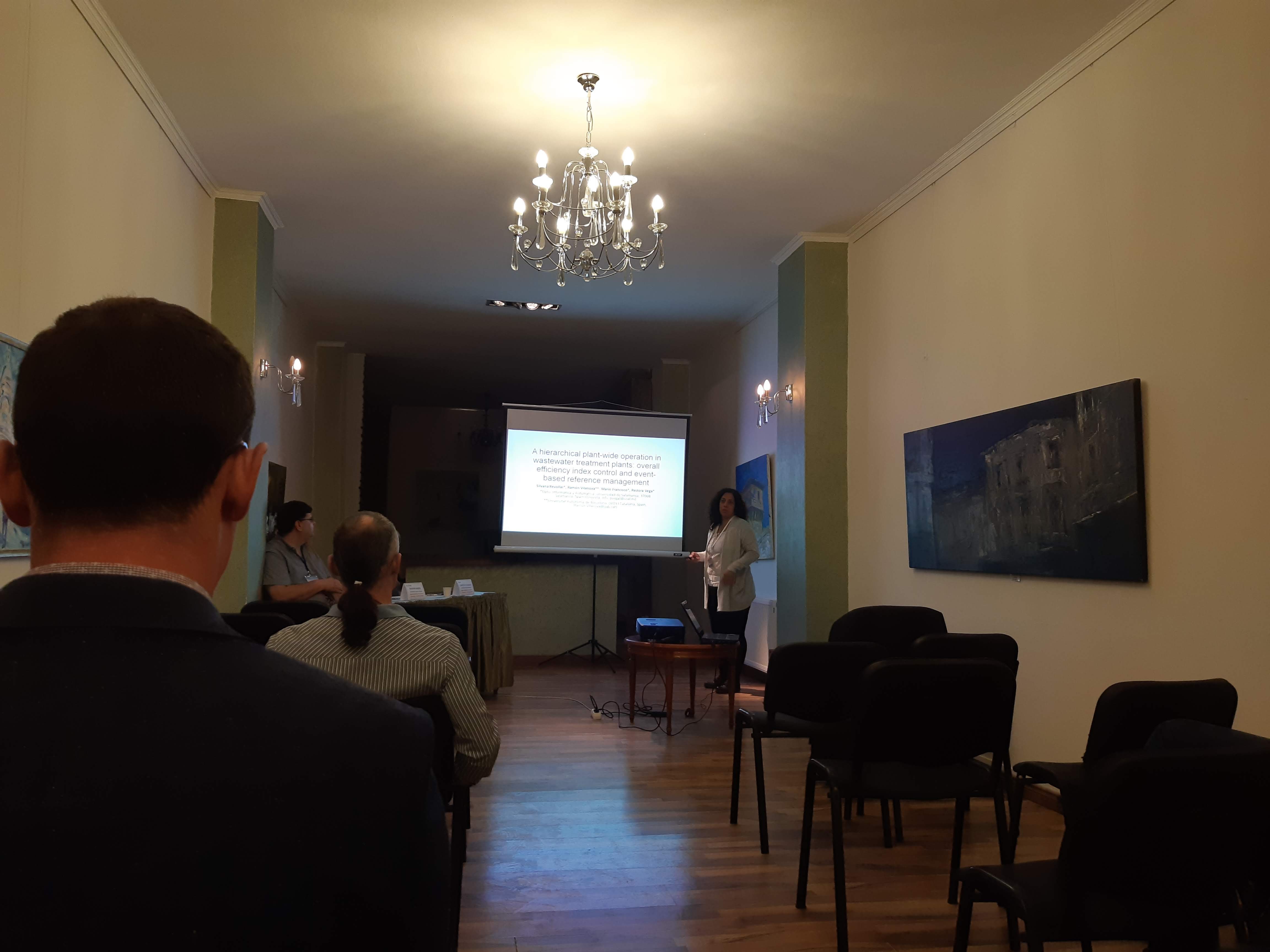
I have to stress out that there was a speaker who demonstrated how presentation can be done without the speaker itself. The presentation was just the paper divided into multiple slides and almost literally read by the speaker (or should we call him reader?).
After the session we had one hour break before the dinner started. The dinner was again in the restaurant at Hotel Palace. Food was again great, there was even a music band. Since we were tired after a whole day of presentations, we decided to leave quite early.
Thursday (11.10.2018)
After breakfast, we went to the conference venue a little bit earlier so that Sam could get prepared. Our session of Bioprocess Modelling and Control was held in King Carol I Room. The chair of the session was Mariana Titica. She was one of the authors of Ifrim et al. model we were exploring recently, so we could discuss some issues. The general problem is that the model is not SBML compatible.
Bioprocess Modelling session started by the first talk On the Use of Agent-Based Modeling for Smart Farming. It was about agent-based modelling of crops, the general goal was to produce more food with fewer resources. They didn’t find a suitable model of a crop, all were oriented on different problems. They needed to understand emergent behaviour in the crop to allow them to apply covering control strategy. In the developed model and control strategy, every plant was an agent, inputs were water, nutrients etc. The implementation was done in NetLogo. They modelled many scenarios of irrigation, the model has to be improved, not very precise results. (Note: the source of the model could be used in Modelling and simulation course at Faculty of Informatics).
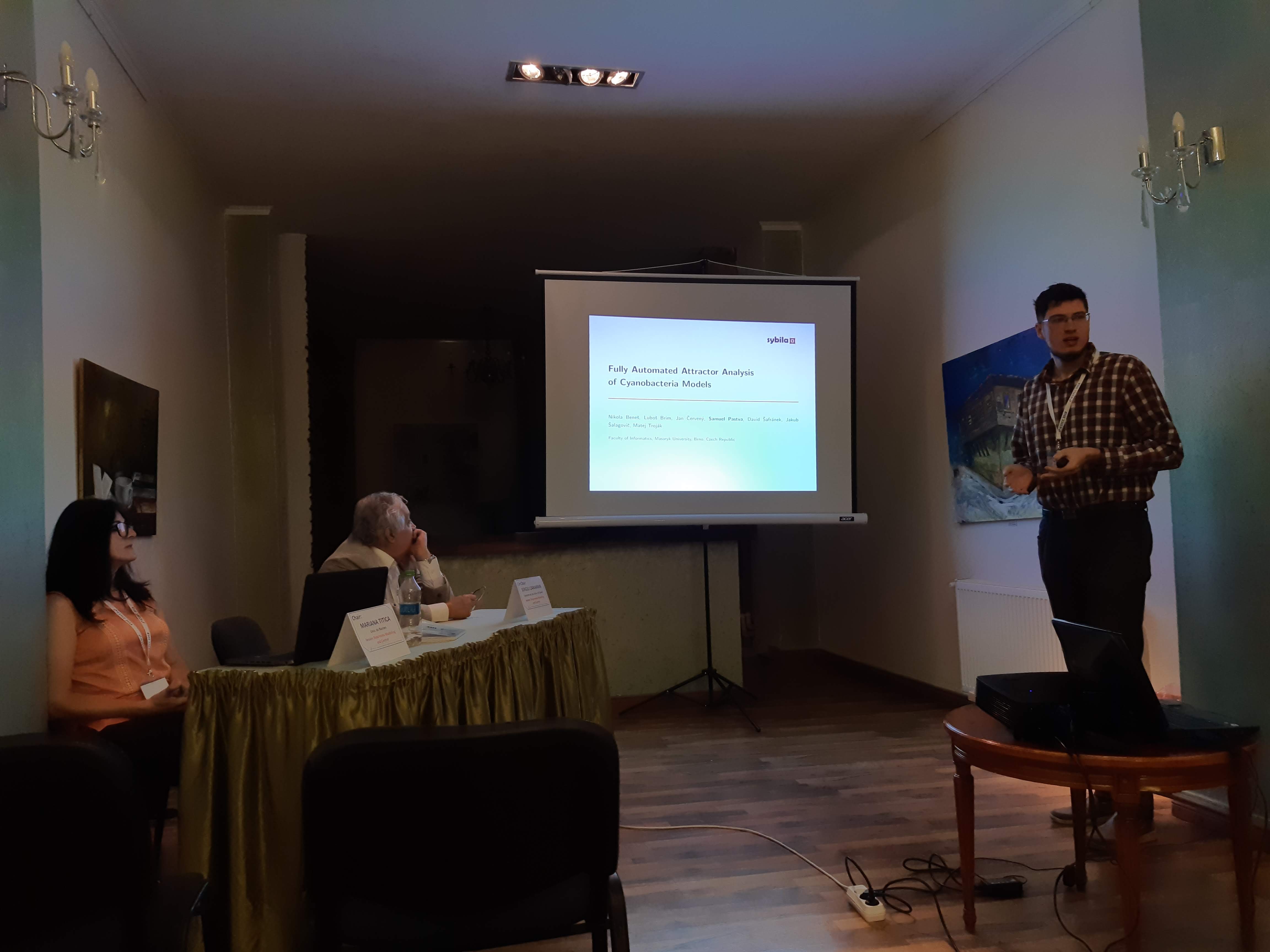
Next presentation was given by Sam: Fully Automated Attractor Analysis of Cyanobacteria Models (our paper). He gave an excellent introduction to the problem, described very precisely the used method and briefly the results. It was also kind of funny (huge thanks to Bob, the biologist).
The third presentation was given by the same speaker as in the first one, this time he was just substituting a colleague. He was talking about the problem of observables and implementing sensors in practice, common issue of “scaled” observing variables.
The talk An Interactive Teaching System for Kinetics Modelling of Biotechnological Processes was made by Bulgaria and Romania cooperation. It was basically a GUI for interactive teaching of modelling, their analysis, optimisation algorithms, storing results etc.
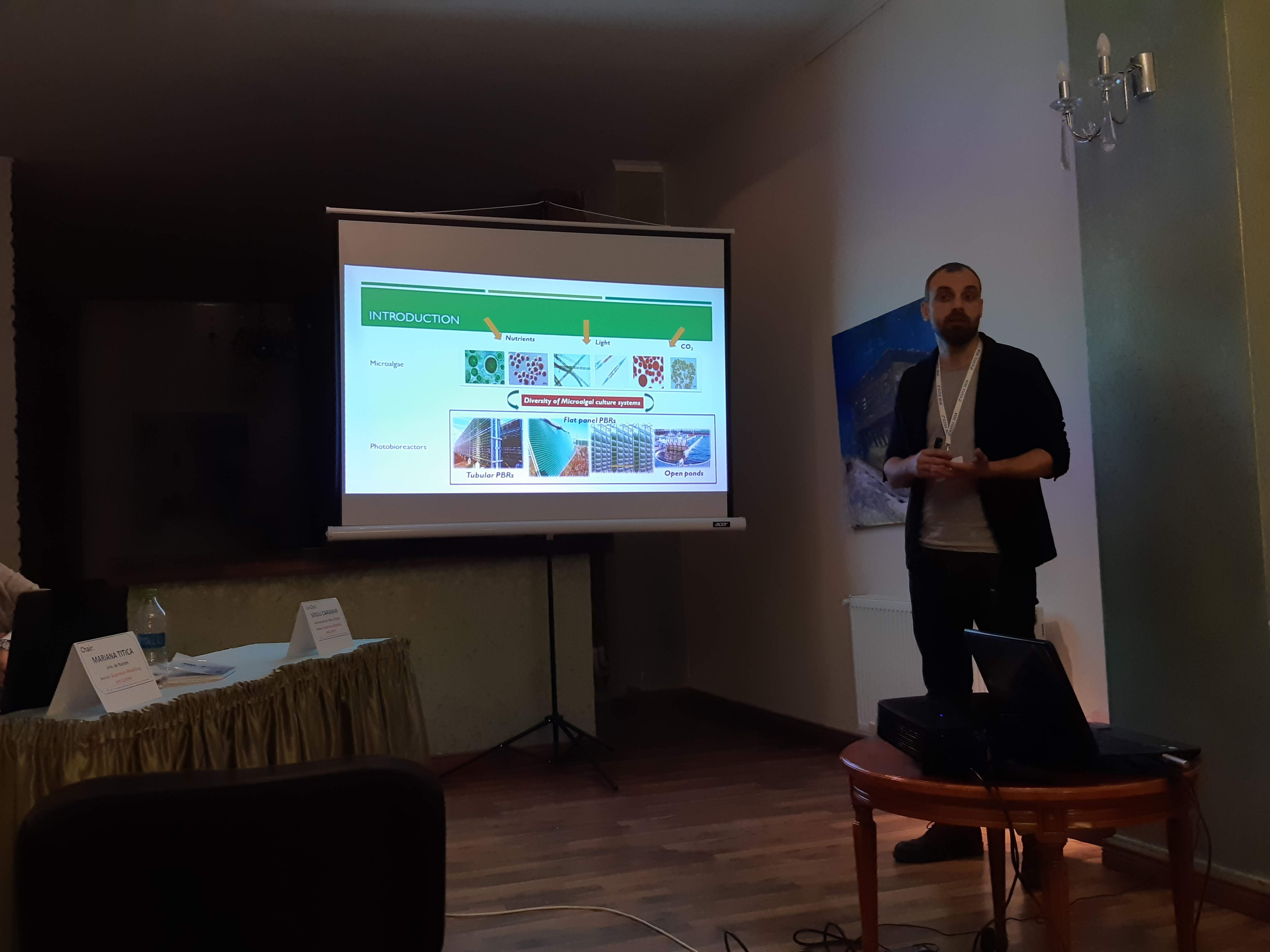
The last talk Simultaneous Control of Ph and Dissolved Oxygen in Closed Photobioreactor given by George Ifrim was about modelling microalgae in bioreactors, their meaning and benefits of the research. The model I already mentioned (coauthor was Mariana Titica) was presented and then it was placed in a control setting with PID controllers. The model considers food as input (CO2, N2, light). The model was described as three parts: irradiance, biology, thermodynamic model (to obtain pH). The goal was to control dissolved oxygen, high values slow or block growth of the cells.
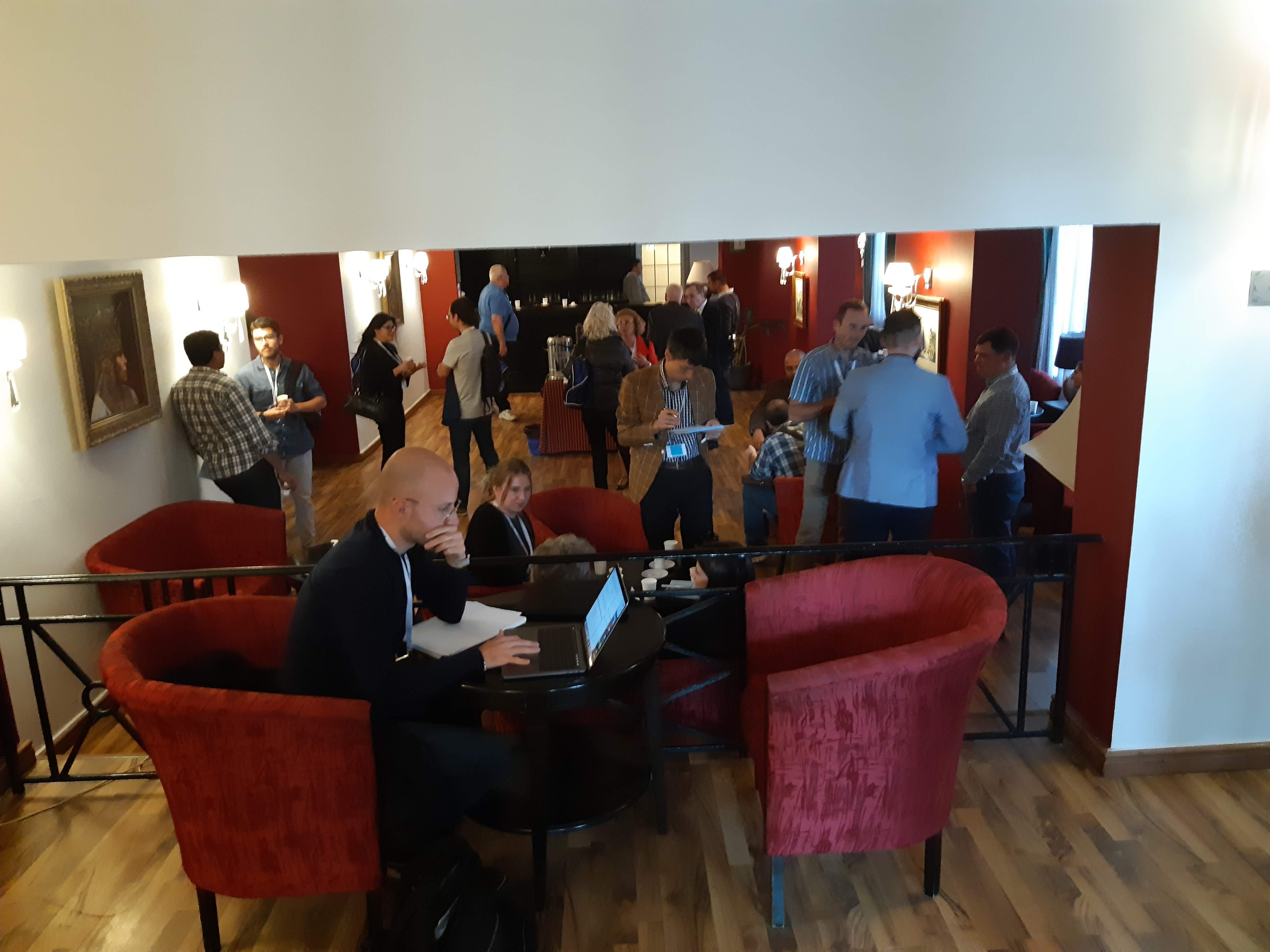
After the session, there was a coffee break followed by another plenary talks block. The first one was given by Alberto Bemporad: Recent Advances in Embedded Model Predictive Control. It was mostly about MPC in the industry and its importance. He talked about many applications and the further increase in usage (quite a trend). He mentioned the problems of speed (the worst case scenario), resources, and validation of code. The second talk Some exciting Issues in the Problem of Observer Design by Gildas Besancon was about the problem of observers (not really control itself), their place in control setup, and how to handle many properties of observables (e.g. time, dimensionality). I liked citation by G. Galilei: “Measure what is measurable and make it measurable what is not so”.
After another delicious lunch, we attended a bus trip to Bran castle, the famous castle where Dracula lived. We left at 2 pm. The journey took us way longer than planned due to multiple road reconstructions and traffic jams. We arrived at 4 pm.
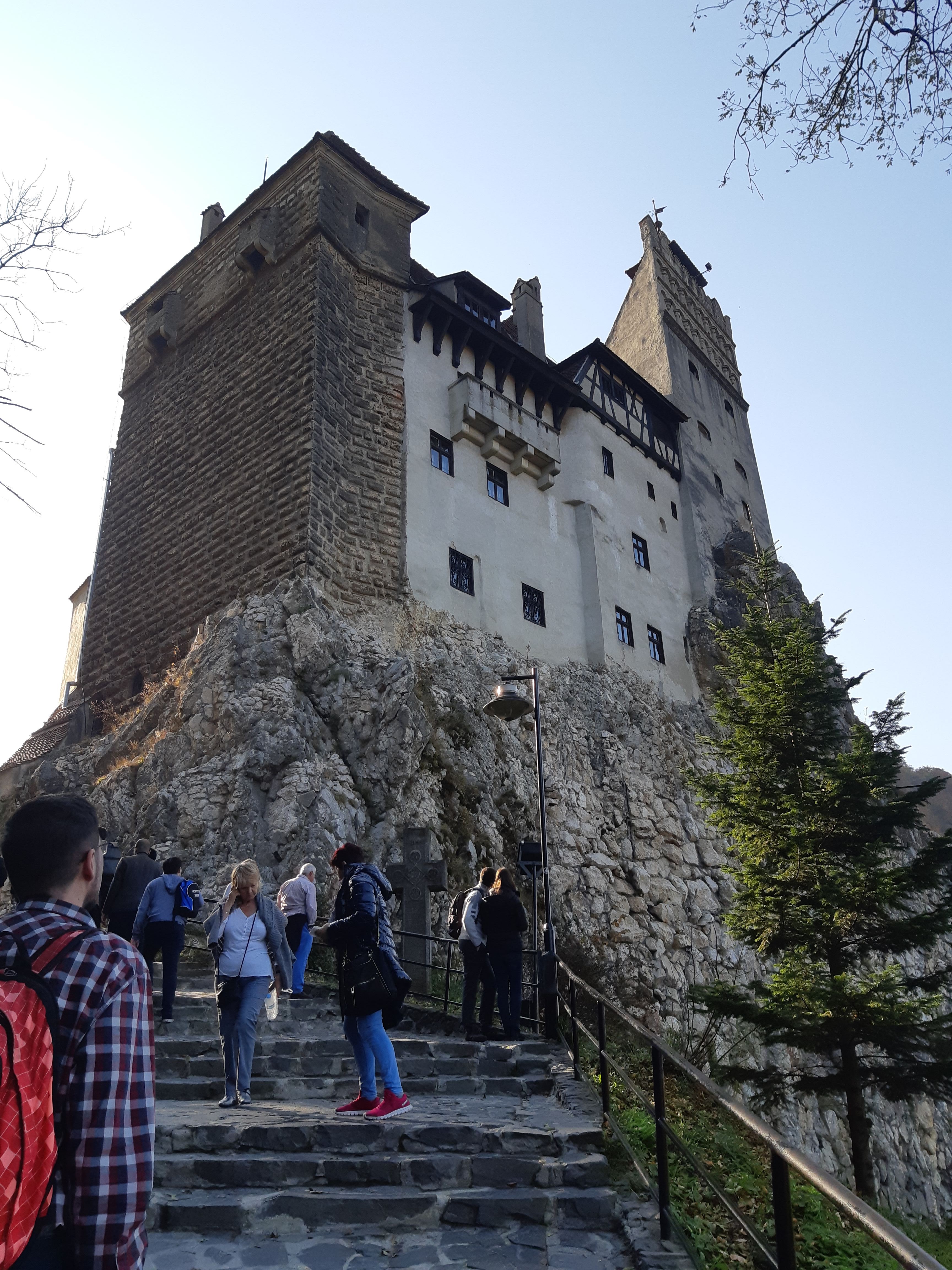
We went as a group to the castle. It took us about 5 minutes and we had another 1:30 hours until bus departure. Inside the castle, there was a short talk in English by a guide. It was quite funny, he was joking about how the legend of Dracula was established, that local people had no idea about it, but once tourists started to visit the place they all suddenly knew the legend for ages, had bites on their necks etc. You can read how the legend was established here. Then we had a free tour through the castle.
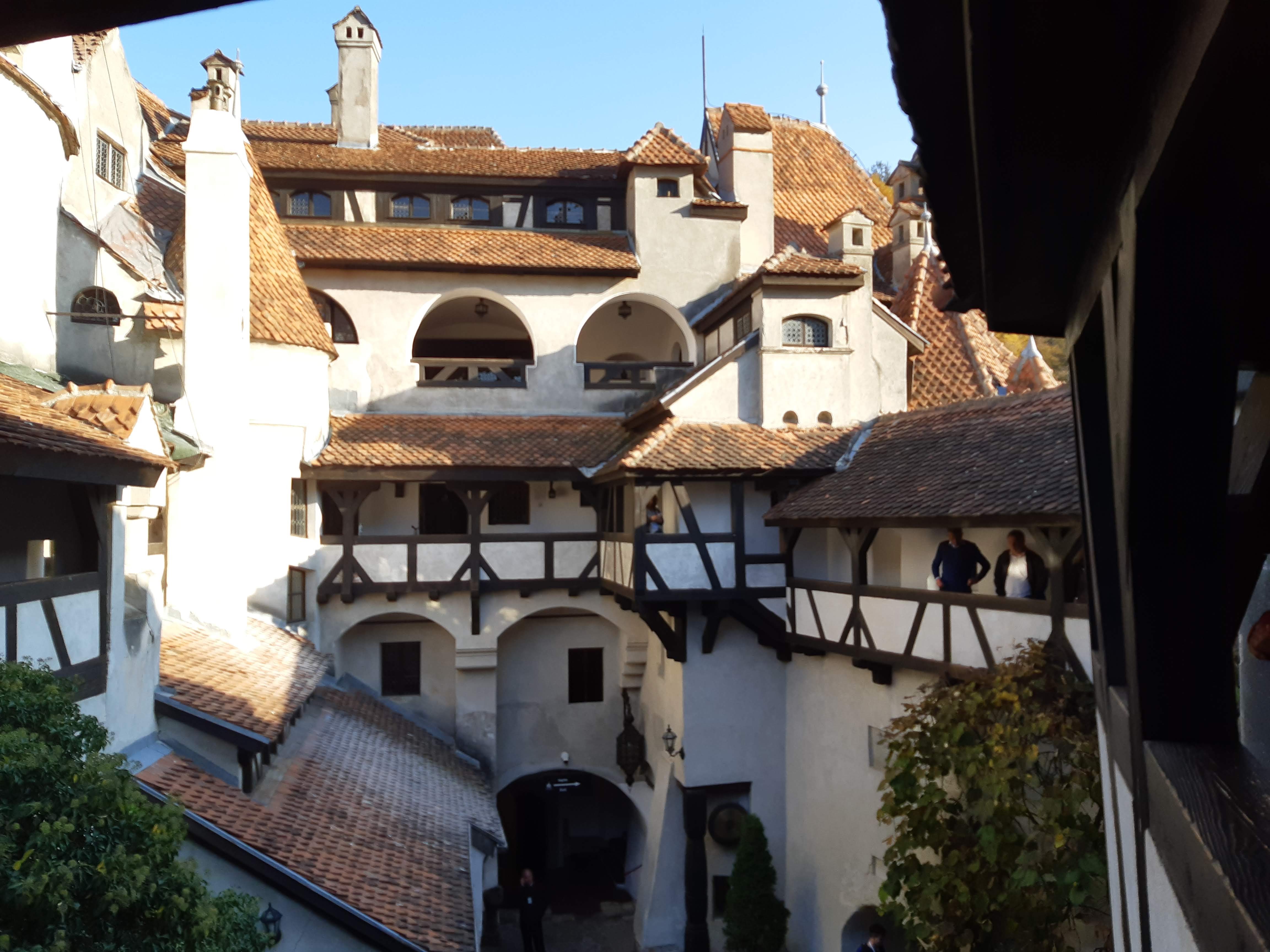
It was smaller then I expected, the tour took only 40 minutes. Despite the size, it was quite a maze. Three floors were connected by many narrow stairs in a very confusing fashion. The castle was built in the 14th century, but most of the furniture and interior was reconstructed and renewed in the 19th century. After the tour, we went to the park outside with some nice views of the castle. We left by bus at 5:30 pm. Due to more traffic jams, we returned at 7 pm.
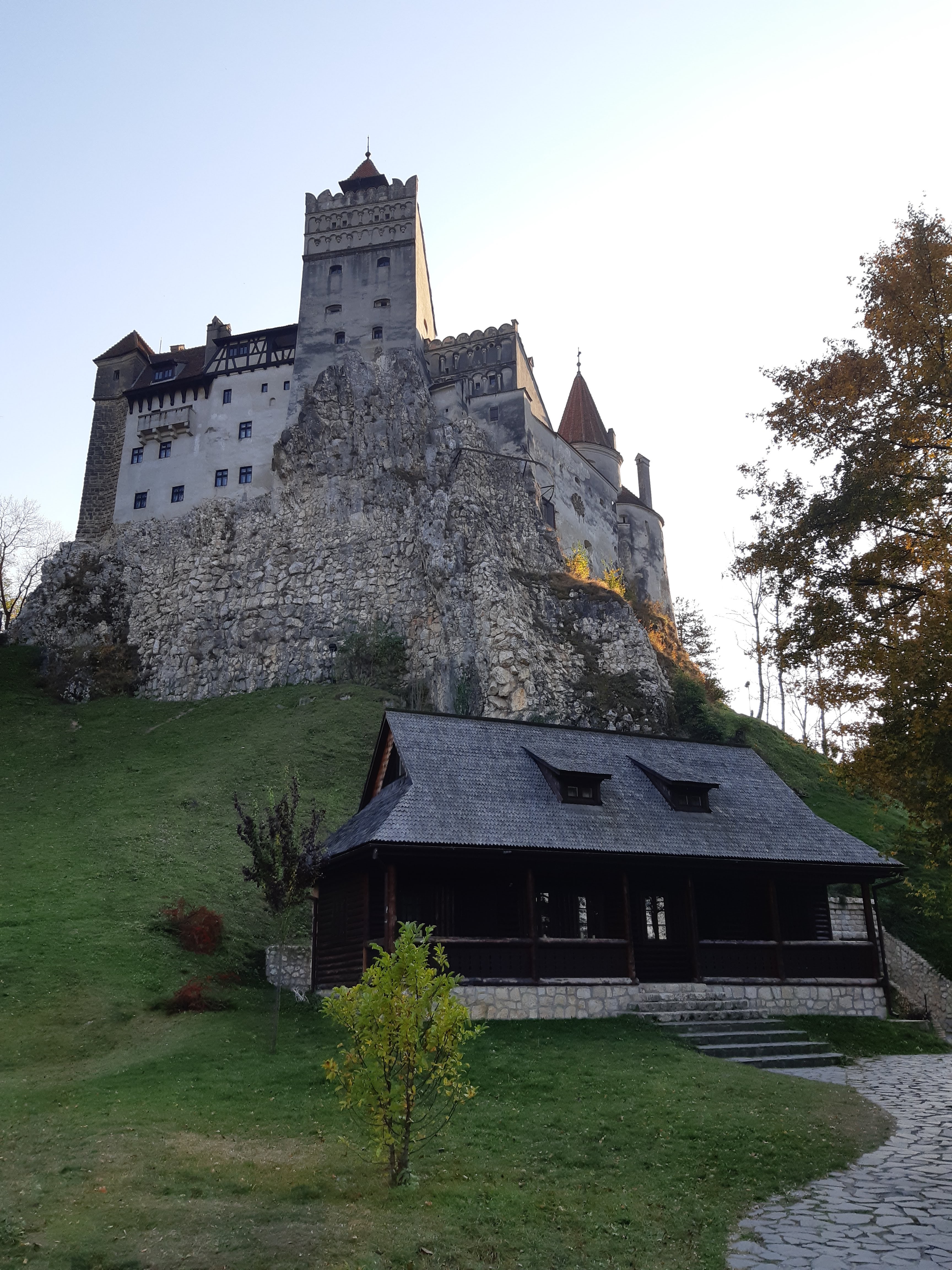
Conference Gala dinner was planned at 7:30 pm. It took place in the casino and interior garden. It was very well-prepared. There was also some local music and dance group, they even managed to make some people dance with them (mostly locals, but also some invited speakers). This way they showed their traditions and people had some fun. From the traditional music, it soon changed to real party, but people weren’t much interested in that. The reason could have been that it was already quite late and most people were waiting just for the food (for example us), which was served in multiple dishes, the first at 9 pm, the second at 11:30 pm followed by a desert.
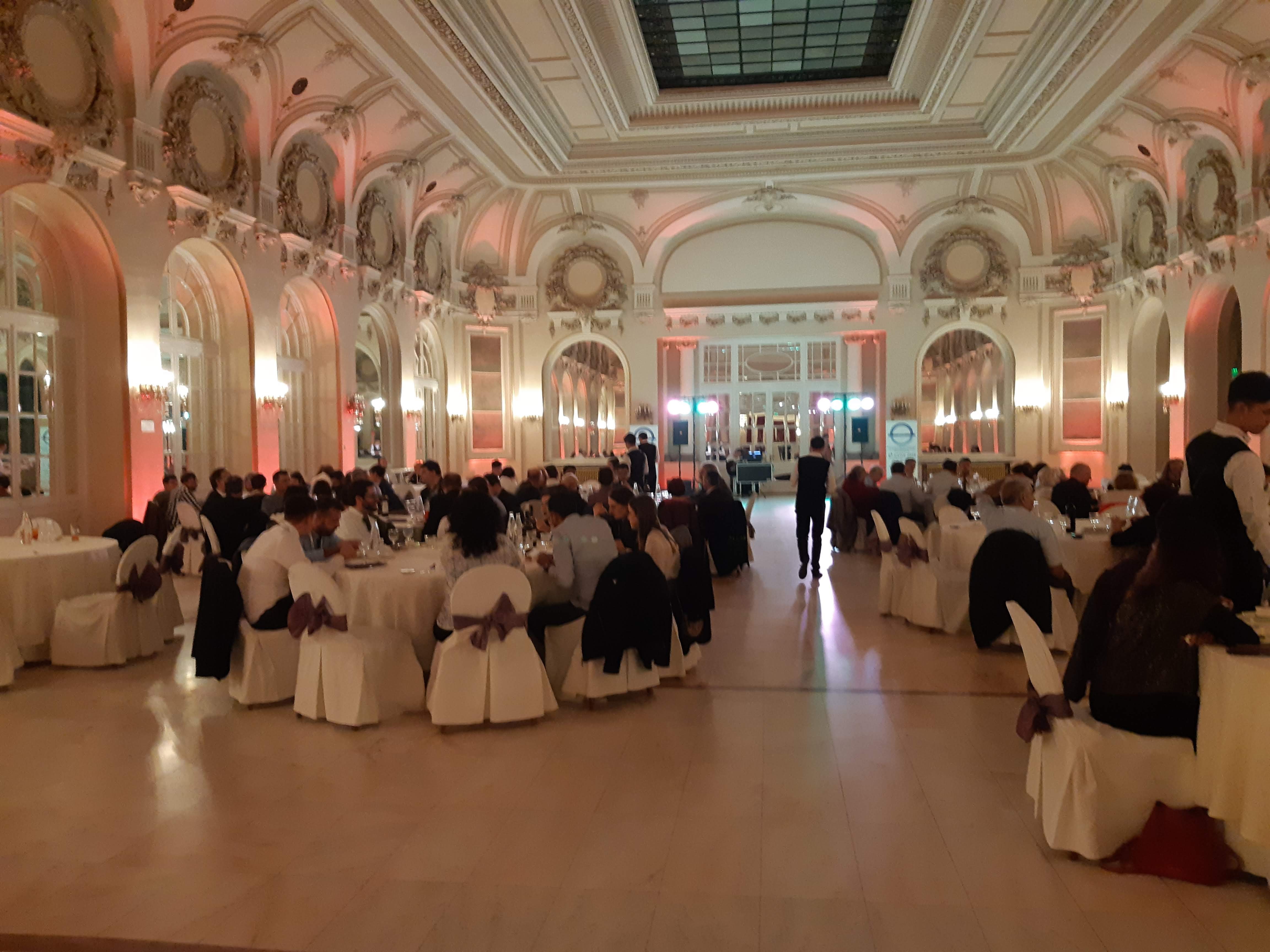
Friday (12.10.2018)
On the last day of the conference, we joined the morning session about System identification and modelling in King Ferdinand Room. The session started with talk Recurrent Neural Network Models for Myoelectric-Based Control of a Prosthetic Hand about modelling of human hand with neural networks. The inputs were myoelectric impulses of muscles - measured by some special sensors. Results were presented for separate finger responses, not so good overall results.
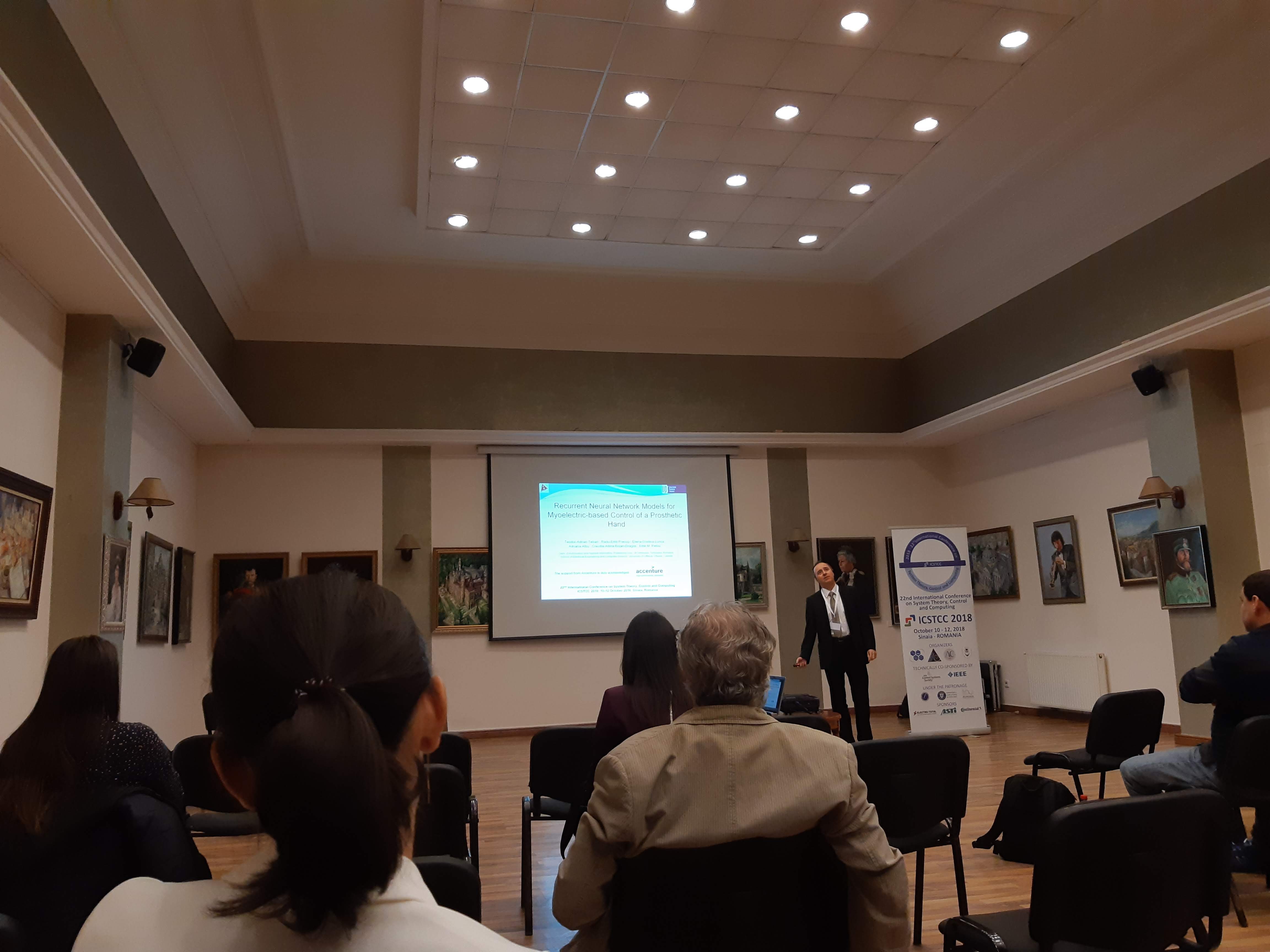
The other talks were generally about the identification of systems such as reaction networks, modelling of the battery (which was a nice demo of the fact that even artificial objects are hard to model). The last talk Artificial Neural Network Approach for Fault Recognition in a Wastewater Treatment Process was about neural network modelling of wastewater fault analysis. They recognized several fault types (represented as different neurons in output layer), the goal was to identify to right one. The results very precise, the learning process was somehow controlled and finished pretty early. Training was done according to data (~10000 samples) simulated from a model, however it was quite questionable (a pump is working or isn’t, what else?). Interesting (and kind of funny) fact was that the presenter didn’t have much idea about how the neural network is working (the problem of high-level programming).
We skipped the last session since we wanted to work on our standardised approach in software development and project assignments management for our lab.
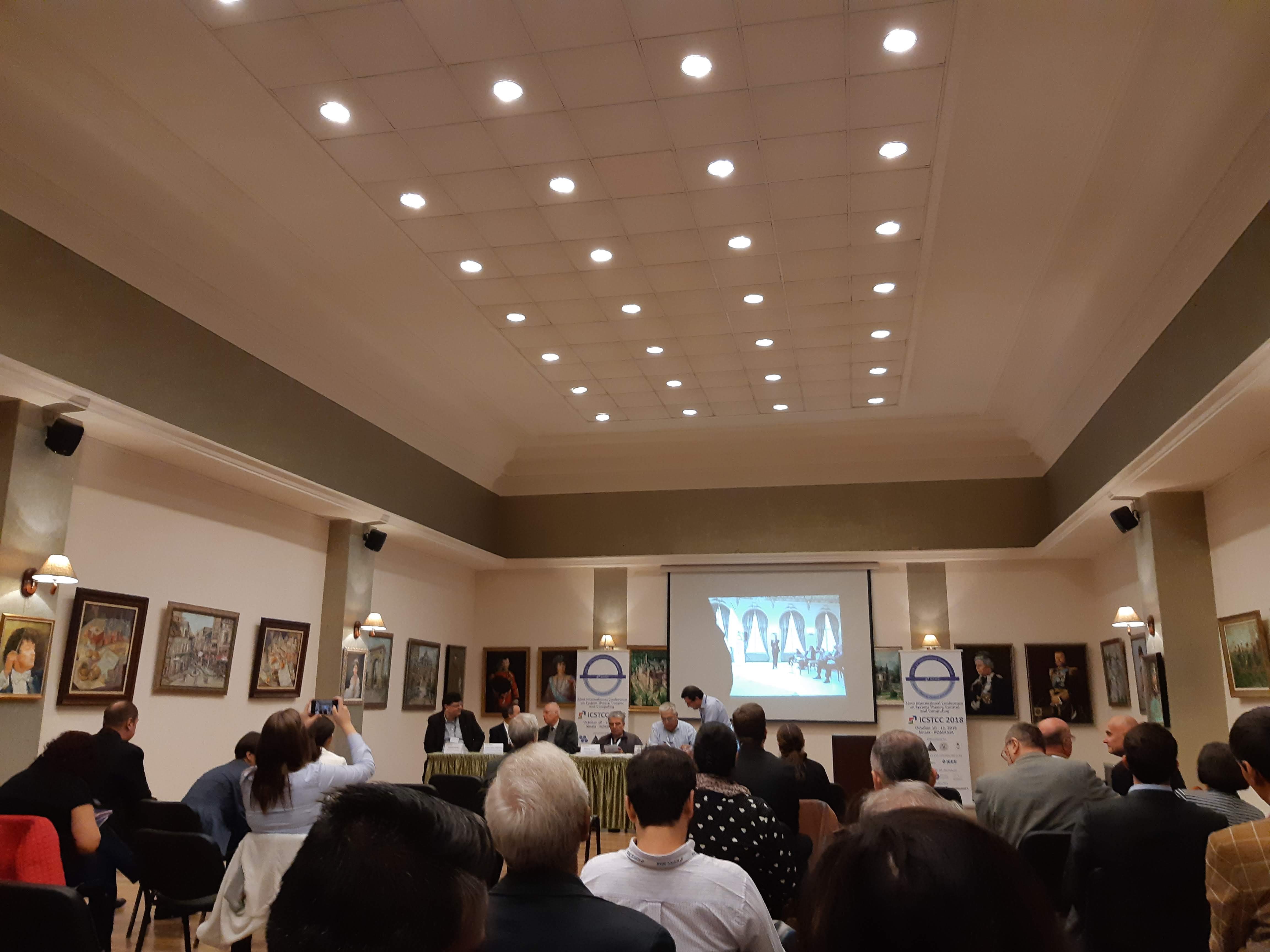
The conference was finished by an awkward sponsor talk from industry (Electro-Total). In the closing ceremony, we discovered the conference is every year held in the same place and it was established as a join of multiple local conferences. Finally, the best papers were announced based on the quality of the paper and presentation. From 135 accepted papers (which will be published in conference proceedings), 6 were awarded as the best ones. And one of them was our contributed paper!
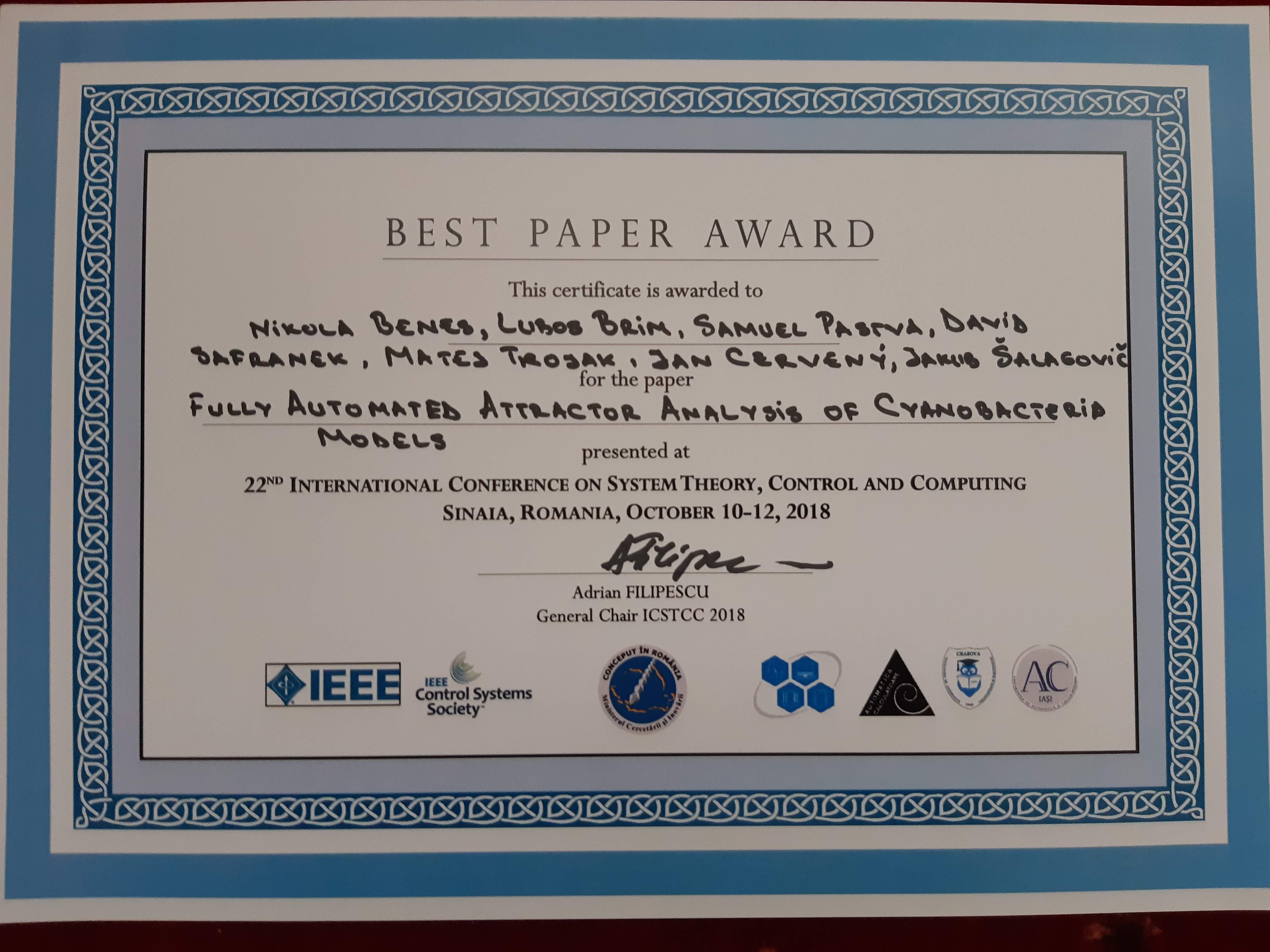
After the conference was over, we had one last lunch. Then, we wanted to enjoy a free evening and went to visit two castles in the city. Unfortunately, they were already closed (from 4 pm!), therefore we weren’t able to get inside. But we went there anyway; we wanted to see them at least from the outside. They were really magnificent. Then we went through outskirts of the city to the city centre, where we had dinner.
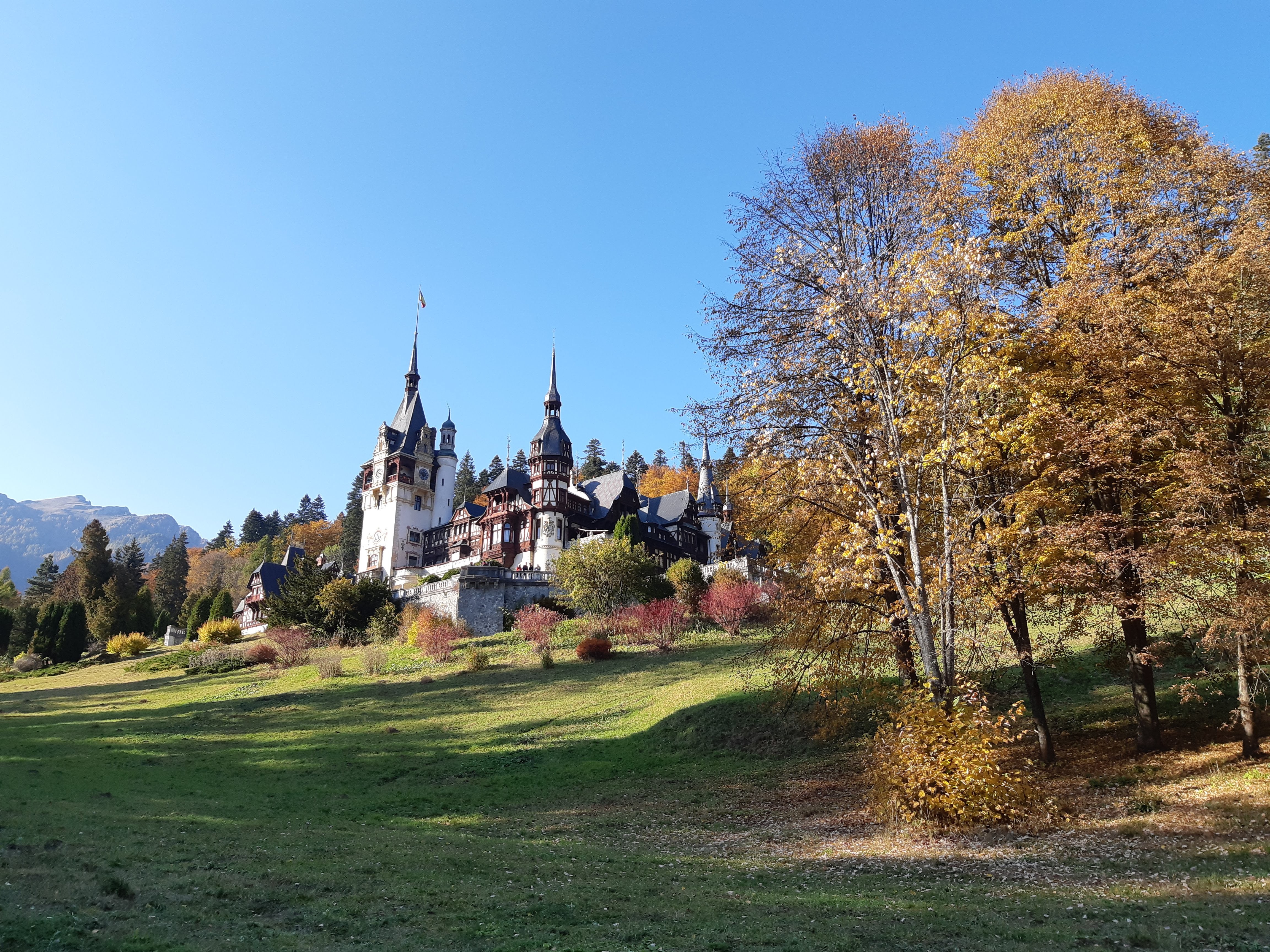
Saturday (13.10.2018)
In the morning, we checked out from the hotel and took a train to Bucharest. This train was an intercity type (30 minutes less than on the way to Sinaia), but twice that expensive. When we arrived there, we walked about 45 minutes to parliament, a colossal building hosting Romanian government. From there we started our tour through the old town which took us about 3-4 hours. We also stopped for lunch (they had a wonderful ananas, kiwi and coconut lemonade).
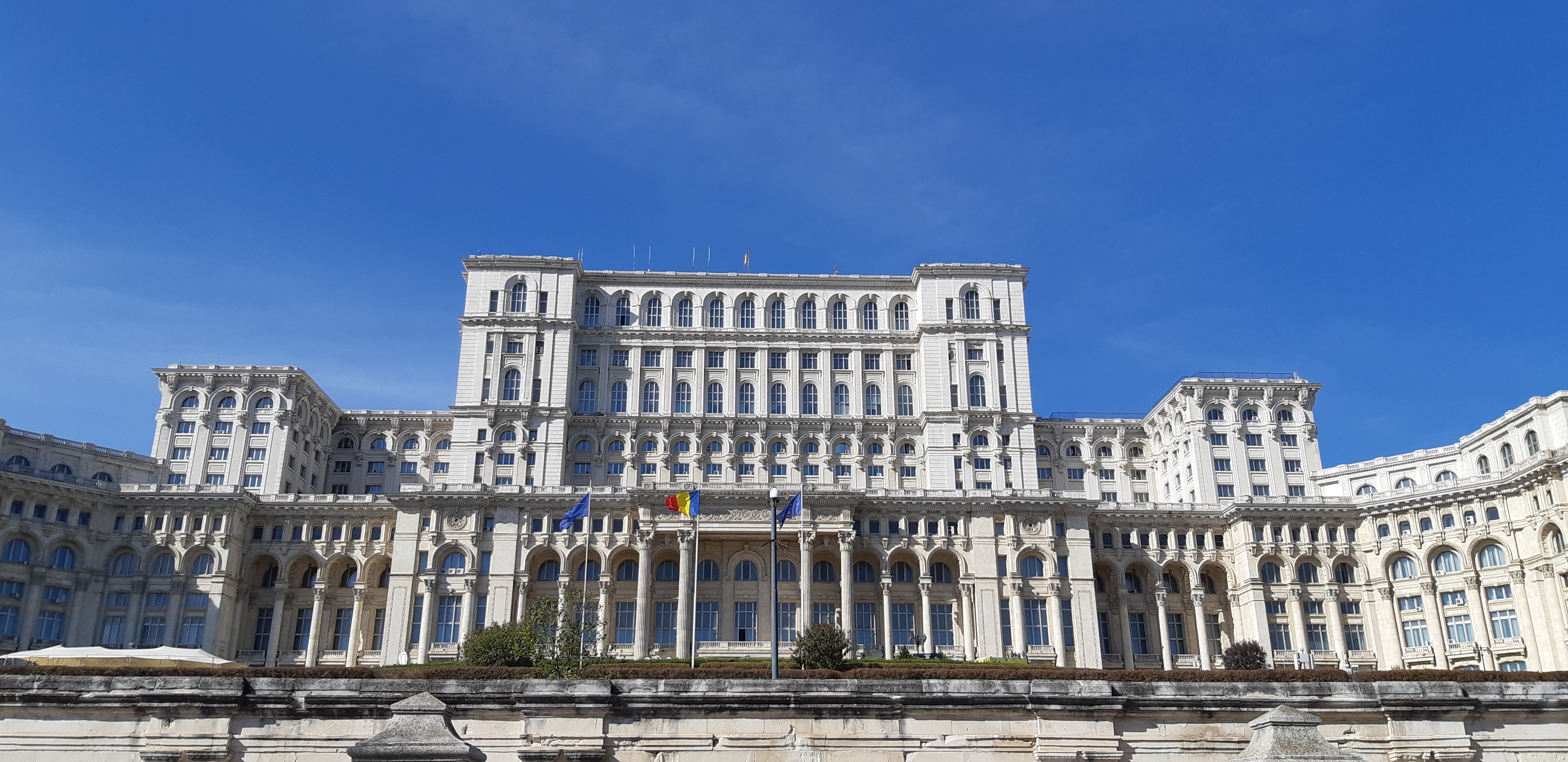
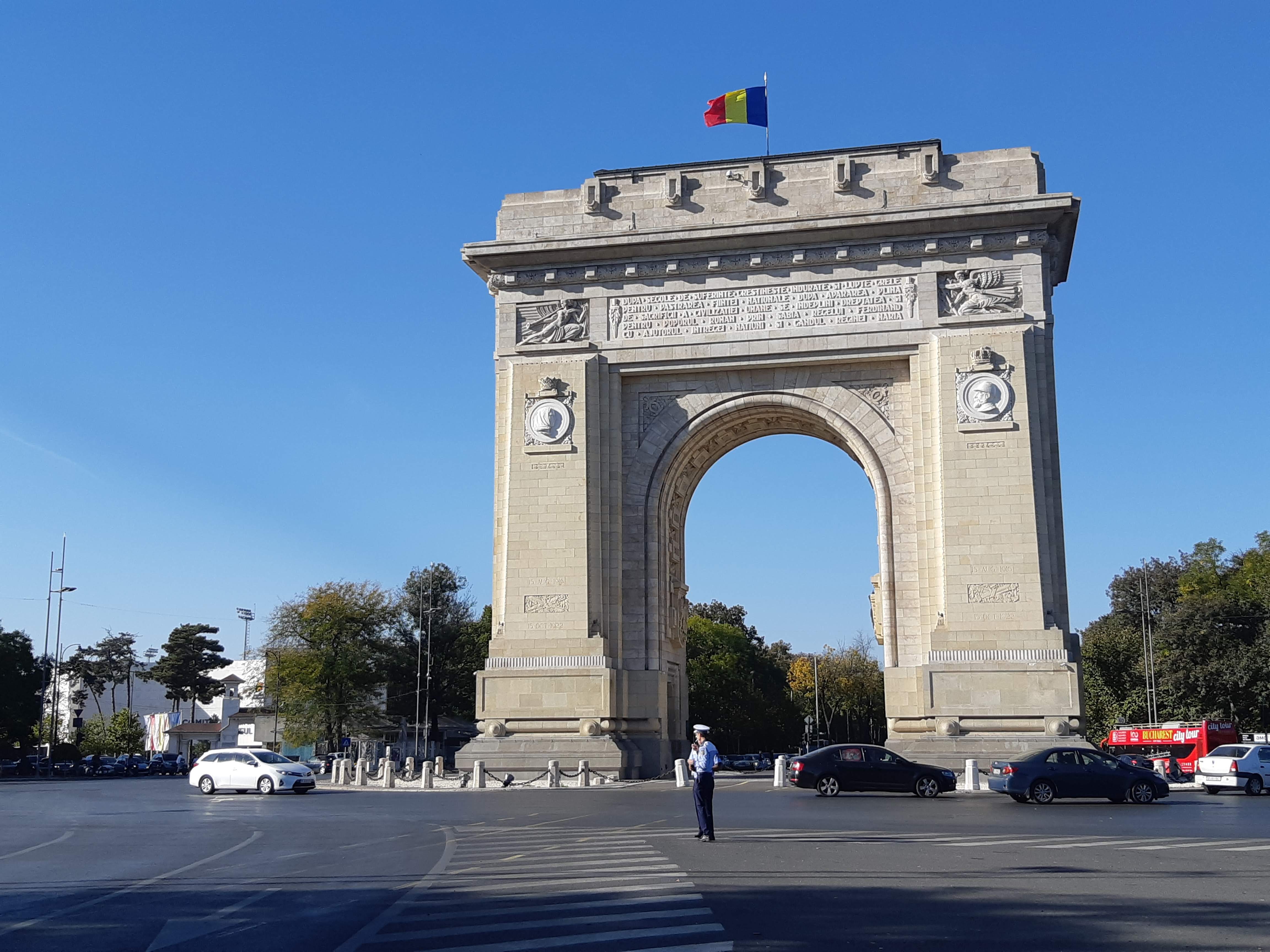
At 4 pm, we took a bus to the airport. There we bought some food and waited for our flight to Vienna. There we had to wait for two more hours for our bus. We safely arrived in Brno about midnight.